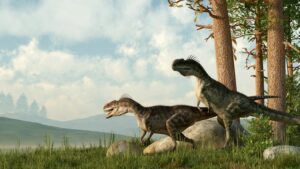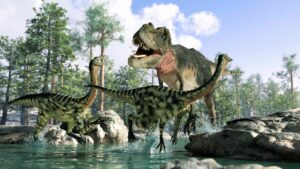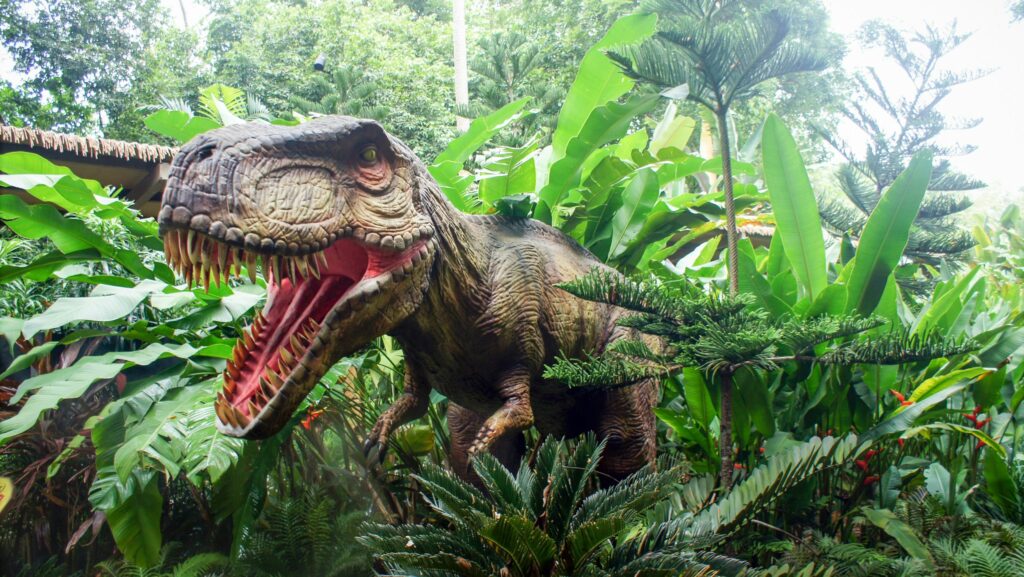Imagine stepping back in time, walking in the very footprints of dinosaurs that roamed the Earth millions of years ago. That’s the magic of the St. George Dinosaur Discovery Site, a unique window into a world long past. This article will take you on a virtual tour, showcasing stunning photos that bring this ancient world to life.
The site, nestled in St. George, Utah, isn’t just a museum. It’s a time capsule, preserving some of the best-preserved dinosaur tracks in the world. Through the lens of photography, you’ll witness the majesty of these prehistoric beasts, and the environment they once called home.
So, let’s embark on this journey together, exploring a world where dinosaurs ruled, captured in vivid detail through the power of photography.
St. George Dinosaur Discovery Site Photos
 Referred to as a frozen echo of time, the St. George Dinosaur Discovery Site, experts argue, holds colossal historical significance. Dating back to nearly 200 million years, this site offers glimpses into the Early Jurassic era, a critical period. Home to beautifully preserved dinosaur tracks, the site captures a living snapshot of the dinosaurs’ lives. Predators stalk their prey, and herbivores graze leisurely, all captured in the instances marked in stone. Think of it as a paleontologist’s dream come true, attracting scholars and enthusiasts around the globe. This remarkable site continues to fuel scientific research, helping unravel mysteries of ancient ecosystems and illuminating extinct species’ life patterns.
Referred to as a frozen echo of time, the St. George Dinosaur Discovery Site, experts argue, holds colossal historical significance. Dating back to nearly 200 million years, this site offers glimpses into the Early Jurassic era, a critical period. Home to beautifully preserved dinosaur tracks, the site captures a living snapshot of the dinosaurs’ lives. Predators stalk their prey, and herbivores graze leisurely, all captured in the instances marked in stone. Think of it as a paleontologist’s dream come true, attracting scholars and enthusiasts around the globe. This remarkable site continues to fuel scientific research, helping unravel mysteries of ancient ecosystems and illuminating extinct species’ life patterns.
Highlights from Recent Discoveries
Each day unveils new treasures at the St. George Dinosaur Discovery Site. Let’s dive deep into the most intriguing findings of recent times. Firstly, an unusual dinosaur track calling attention was found, standing out among typical three-toed impressions. Tracing an ornithopod foot, this discovery prompted speculation, stirring the scientific community. Secondly, researchers unveiled a set of tracks suspected to belong to the carnivorous dinosaur, Eubrontes giganteus. Noticeable for their deep, round impressions, these tracks provide an inside peek into the predator’s walking pattern. Lastly, a significant find featured a rare communal nesting ground, evidence that herbivorous dinosaurs systematically nested and raised their young together. Offering a deeper understanding of the social behaviors of these creatures, this discovery shined a new light on ancient life. Each finding pushes the boundary of knowledge, thrusting us into an era where giant reptiles reigned supreme.
Importance of Photography in Paleontology
 In the vast disciplinal domain of paleontology, photography emerges as a pivotal tool. It serves as a reliable method for capturing prehistoric details and significantly contributes to enhancing scientific communication. Highlighting its application, it’s at sites such as the St. George Dinosaur Discovery Site that the importance of photography truly shines through.
In the vast disciplinal domain of paleontology, photography emerges as a pivotal tool. It serves as a reliable method for capturing prehistoric details and significantly contributes to enhancing scientific communication. Highlighting its application, it’s at sites such as the St. George Dinosaur Discovery Site that the importance of photography truly shines through.
Harnessing the power of the lens, researchers painstakingly document prehistoric imprints preserved in rock formations. For instance, at the St. George Dinosaur Discovery Site, photography aids in precisely capturing dinosaur tracks dating back to the Early Jurassic era. Detailed images provide clarity, emphasizing grooves and indentations on the fossilized tracks. It’s through these high-resolution photos that scholars discern insights about dinosaur size, walking patterns, and perhaps even behavior. Images not only reveal the presence of different dinosaur species but also draw attention to phenomena such as signs of predation and communal nesting.
Enhancing Scientific Communication
 Photography in paleontology extends its relevance beyond just capturing prehistoric details, it’s instrumental in enhancing scientific communication. Detailed images of fossil finds and prehistoric imprints allow easier cataloging and sharing across the scientific community, which isn’t limited by geographical boundaries. It translates into faster dissemination of new discoveries and theoretical advancements in the field. An exemplary instance remains the unique dinosaur tracks located at the St. George site. High-definition photographs of these tracks have facilitated their study by experts worldwide, accelerating research into the behavior of these extinct species. Consequently, the role of photography in paleontology underscores its capability to bridge time and place, effectively communicating the language of prehistory with contemporary researchers.
Photography in paleontology extends its relevance beyond just capturing prehistoric details, it’s instrumental in enhancing scientific communication. Detailed images of fossil finds and prehistoric imprints allow easier cataloging and sharing across the scientific community, which isn’t limited by geographical boundaries. It translates into faster dissemination of new discoveries and theoretical advancements in the field. An exemplary instance remains the unique dinosaur tracks located at the St. George site. High-definition photographs of these tracks have facilitated their study by experts worldwide, accelerating research into the behavior of these extinct species. Consequently, the role of photography in paleontology underscores its capability to bridge time and place, effectively communicating the language of prehistory with contemporary researchers.
Offering a deeper understanding of the social behaviors of these creatures, this discovery shined a new light on ancient life. Each finding pushes the boundary of knowledge, thrusting us into an era where giant reptiles reigned supreme.

